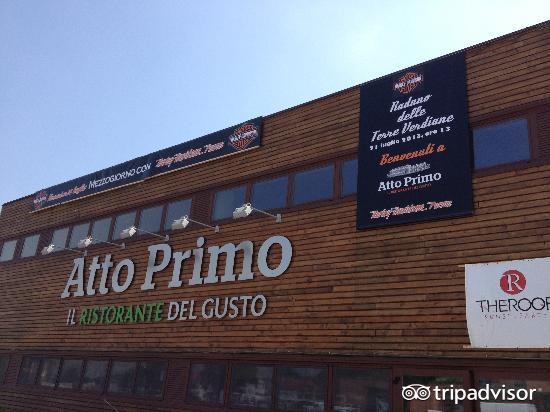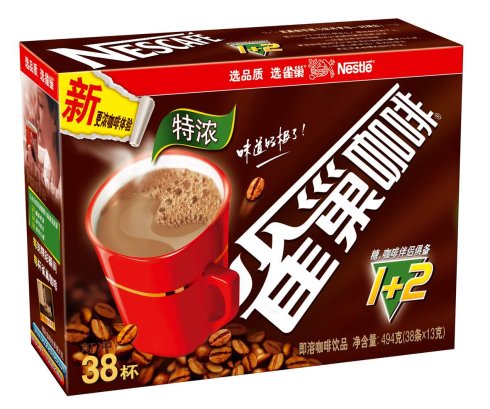Yum plans to open 700 fast food restaurants in China in 2015. Coffee will compete with Starbucks.

Atto Primo, a restaurant owned by global fast-food giant Yum, overlooks Shanghai's Bund, near one of the city's most expensive shopping venues. Yum calls it a "laboratory" for studying Chinese diners. Yum's performance in the big Chinese market continues to decline and is also seeking to recover lost ground.
"A high-end experimental kitchen allows Yum to test new menus and concepts and get feedback from more sophisticated diners-which helps the road to the high end," said Ben Cavender, a senior analyst at China Market Research Group (CMR).
The Chinese market is Yum's largest source of revenue and profits. Same-store sales at Yum's nearly 7000 restaurants in China fell 16% in the fourth quarter of 2014. Because of continuous food panic, increasing local competition and, in a sense, Yum's main brand, KFC, may no longer be popular with Chinese consumers.
In comments emailed to Reuters, Jonathan Blum, a spokesman for Yum, said Atto Primo was "an innovation laboratory that helps us study changes in Chinese consumer tastes" and said the restaurant could help test recipes to be used in Yum's Chinese restaurants.
It is crucial for Yum to turn things around in China. Greg Greg Creed, the new chief executive, said last month that "reviving sales in China is a top priority."
"Yum's move shows that someone has advised Yum that different paths must be tried," said Michael Griffiths, an analyst at TNS in Shanghai.
The Atto Primo interior is decorated with gorgeous crystals, inlaid with 16th-century Italian painting-style walls, and high prices, all of which have little to do with Yum: the only connection between the restaurant and Yum may be what is briefly mentioned in US regulatory documents.
Brand fatigue
Yum plans to open 700 new fast food restaurants in China this year. Atto Primo, a high-end restaurant, is not the only new strategy launched by Yum in China. Chief Executive Clyde said the company plans to launch more coffee drinks in China to compete with Starbucks.
But analysts say Yum is suffering from "brand fatigue" in China. Yum's image has been tarnished by the food panic, raising questions about its supply chain and increasing competition.
Tang Yinan, a 29-year-old Shanghai architect, said he used to eat KFC about 15 years ago, when KFC looked "upscale and novel" and was a safe and clean alternative to other restaurants in the country.
"but now I seldom eat KFC because I have so many choices," he said.
McDonald's was also hurt by the food panic in China, but its move to upgrade its stores and launch McCoffee helped it recover, analysts said.
Still, the share of KFC and McDonald's has been eroded, with more flexible local competitors attracting frugal consumers with healthier-sounding, homegrown food.
Yum's share of China's nearly 800 billion yuan ($129 billion) fast-food market has declined over the past few years, according to market research firm Euromonitor. McDonald's has seen a slight increase in market share over the same period, but has also made significant investments.
Important Notice :
前街咖啡 FrontStreet Coffee has moved to new addredd:
FrontStreet Coffee Address: 315,Donghua East Road,GuangZhou
Tel:020 38364473
- Prev

Is Nestl é too optimistic about instant coffee and a drag on mergers and acquisitions?
In February 2015, nearly 400 tons of unexpired Nestle coffee was destroyed in Dongguan, Guangdong, with a market value of nearly 10 million. Nestl é officials responded that the move was to keep products fresh and destroy stocks. The dumping of instant coffee by Nestl é (China) Co., Ltd. (hereinafter referred to as Nestle China) is the largest destruction of instant coffee since the factory was established in 1992. Xu Xiongjun, an expert on strategic positioning of food and beverage, believes that
- Next

Analysis of China's Coffee Industry in 2015
With the first coffee bean picked, the first roasting test, the first grinding, the first blending and the mellow smell of the first cup of hot coffee, the legend of coffee cultivation and coffee culture spreading on our small planet has become one of the greatest and most romantic stories in history. According to historical records, coffee was first planted in Taiwan in 1884.
Related
- What is the difference between a cake filter cup and a V60 conical filter cup? What are the advantages and disadvantages of the flat-bottomed filter cup brewing solution?
- What is the difference between fine coffee powder and medium coarse coffee powder? Do I need to sift out the fine coffee powder for making coffee by hand?
- Why does hot American coffee taste bitter? Difference in proportional concentration between hot American and ice American
- Is espresso stored overnight in the refrigerator harmful to your body? Is frozen coffee better than freshly ground coffee?
- What parameters and proportions of water temperature should be used to grind and brew fresh coffee beans? Why can't I drink freshly roasted coffee right away?
- Customers have "changed" Manner's new products! Shop assistant: Please don't mess around!
- Remove sockets in customer areas at Starbucks stores?! Netizen: I won't go if I really tear it down
- What is the difference between the taste steps of sun-dried coffee and washed coffee? Why is sun-cured coffee sweeter and washed coffee sour?
- The recipe for salty grapefruit dirty is revealed! Coffee Festival salty grapefruit dirty coffee making materials parameters ratio milk share!
- How about the flavor of Sunlight 74158 at Sidamo Banshaha Mathieu Processing Factory in Ethiopia? 74158 Share the proportion of coffee brewing parameters!

